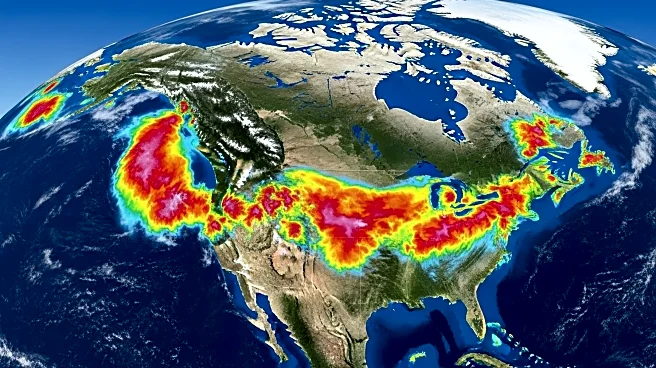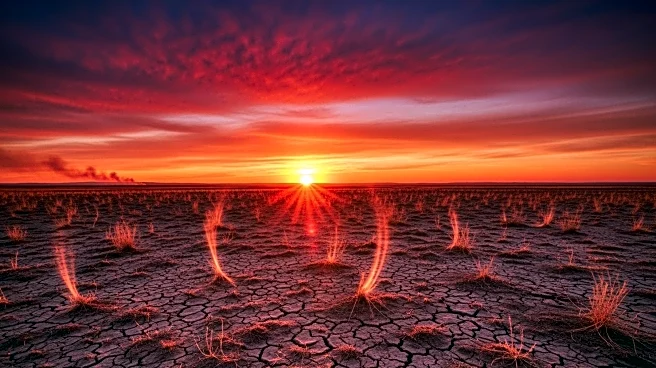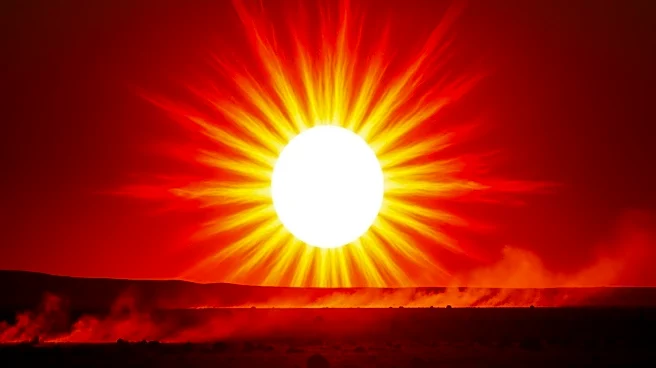What's Happening?
September 2025 began with unusually high temperatures across western North America, setting new heat records in British Columbia, Canada, and the U.S. Pacific Northwest. A high-pressure system known as an omega block settled over the region, causing temperatures to soar. In Ashcroft, British Columbia, a new high temperature record for September was set at 40.8°C (105.4°F). Similar heat was recorded in Spokane, Washington, where temperatures reached 99°F, the highest in September since records began in 1881. These conditions have contributed to large wildfires in British Columbia, exacerbated by a drier-than-normal summer.
Why It's Important?
The extreme heat and dry conditions have significant implications for wildfire management and public safety in the affected regions. The high temperatures and lack of rain increase the risk of wildfires, which can lead to property damage, loss of life, and environmental degradation. The situation highlights the growing challenges posed by climate change, as such weather patterns become more frequent and intense. The economic impact on agriculture and tourism, as well as the strain on emergency services, underscores the need for effective climate adaptation strategies.
What's Next?
As the high-pressure system persists, authorities are likely to continue monitoring and responding to wildfire threats. Efforts to mitigate the impact of these conditions may include increased firefighting resources and public advisories on heat safety. Long-term strategies may involve enhancing infrastructure resilience and revising land management practices to better cope with extreme weather events.














